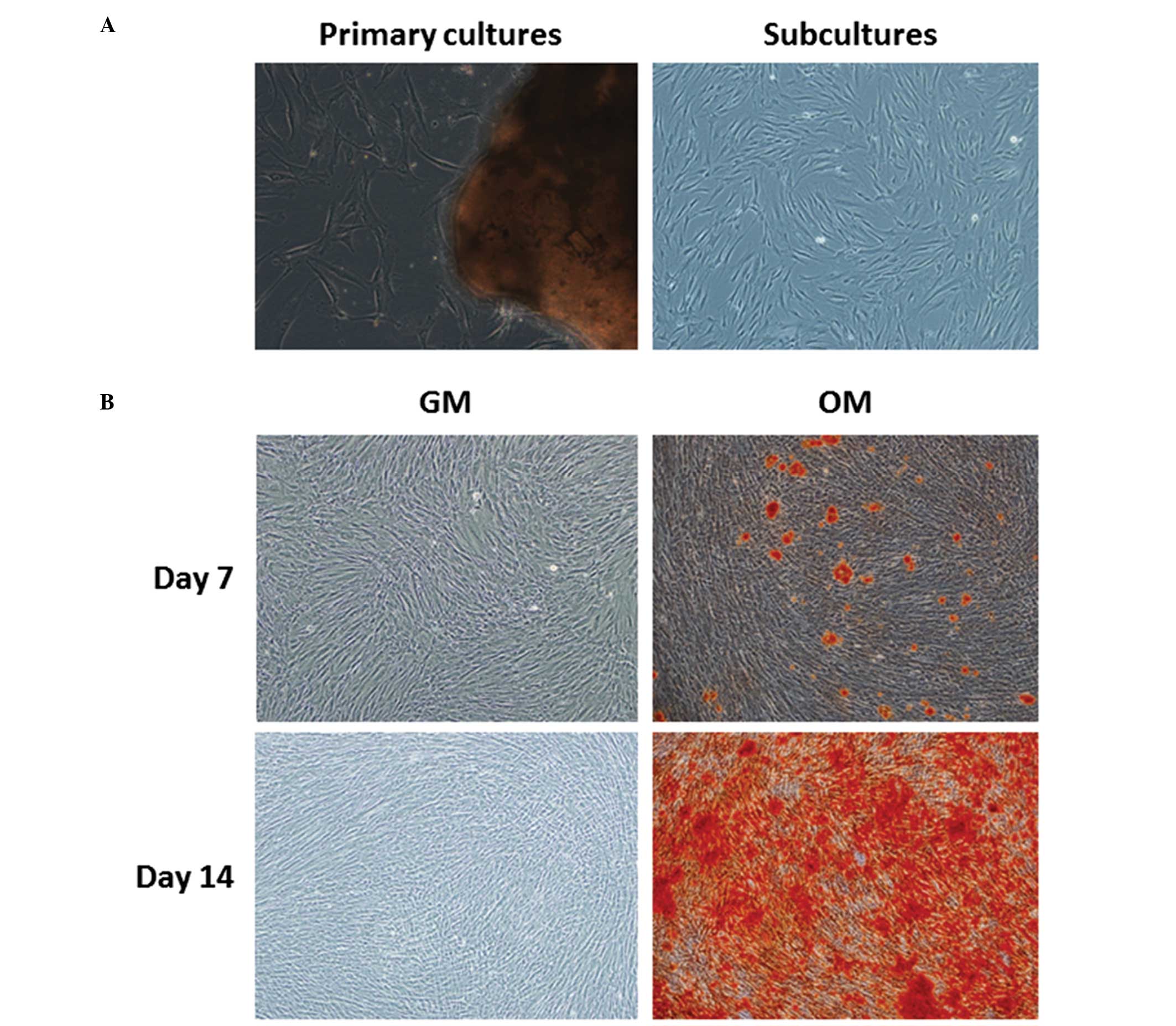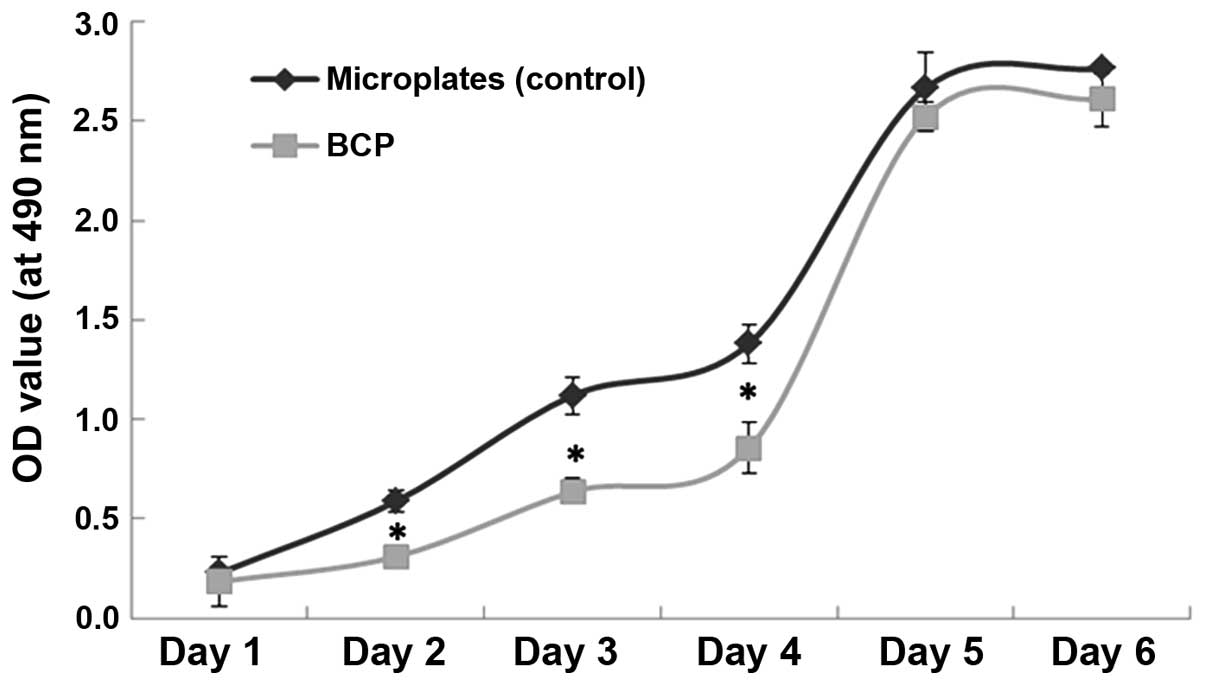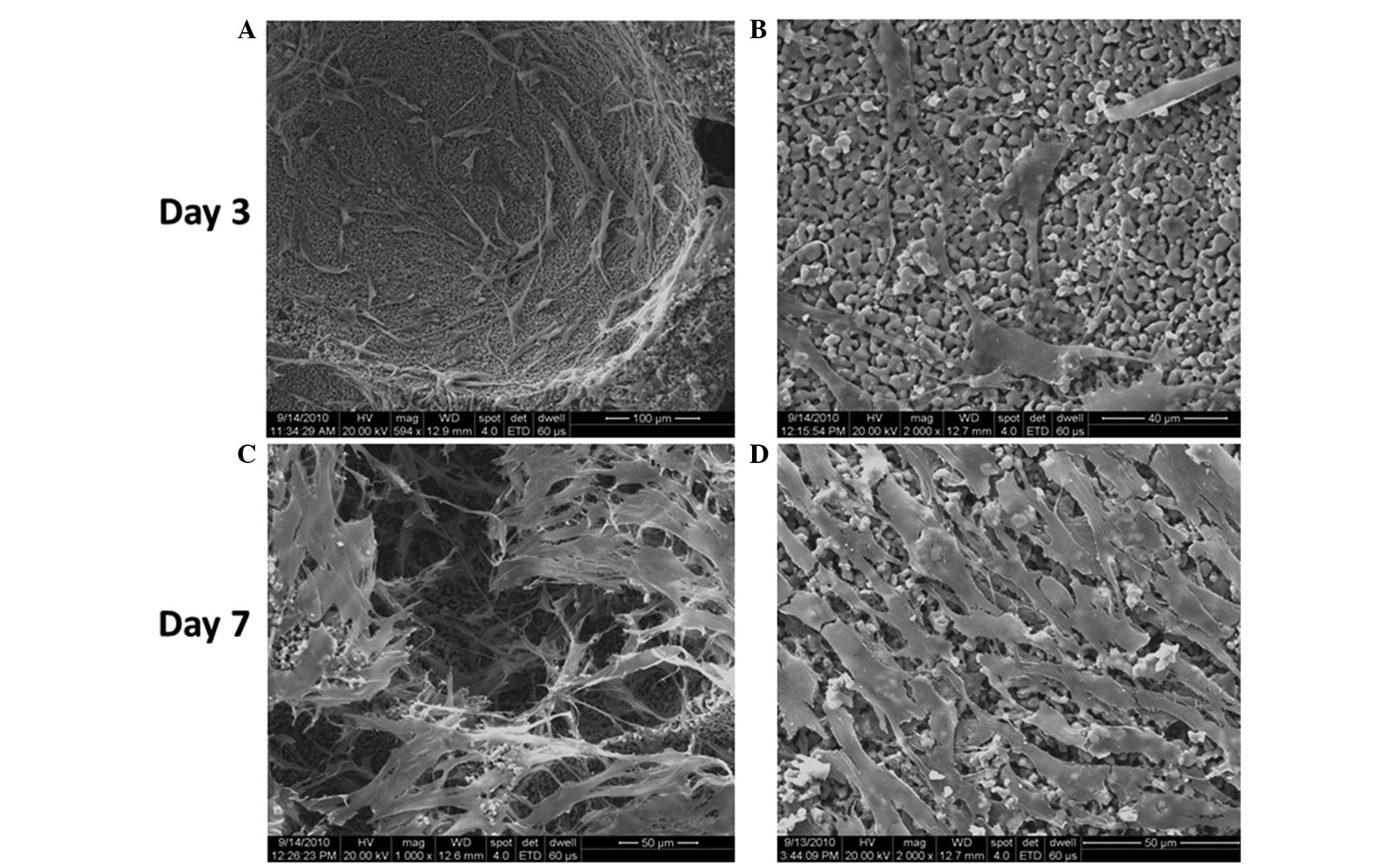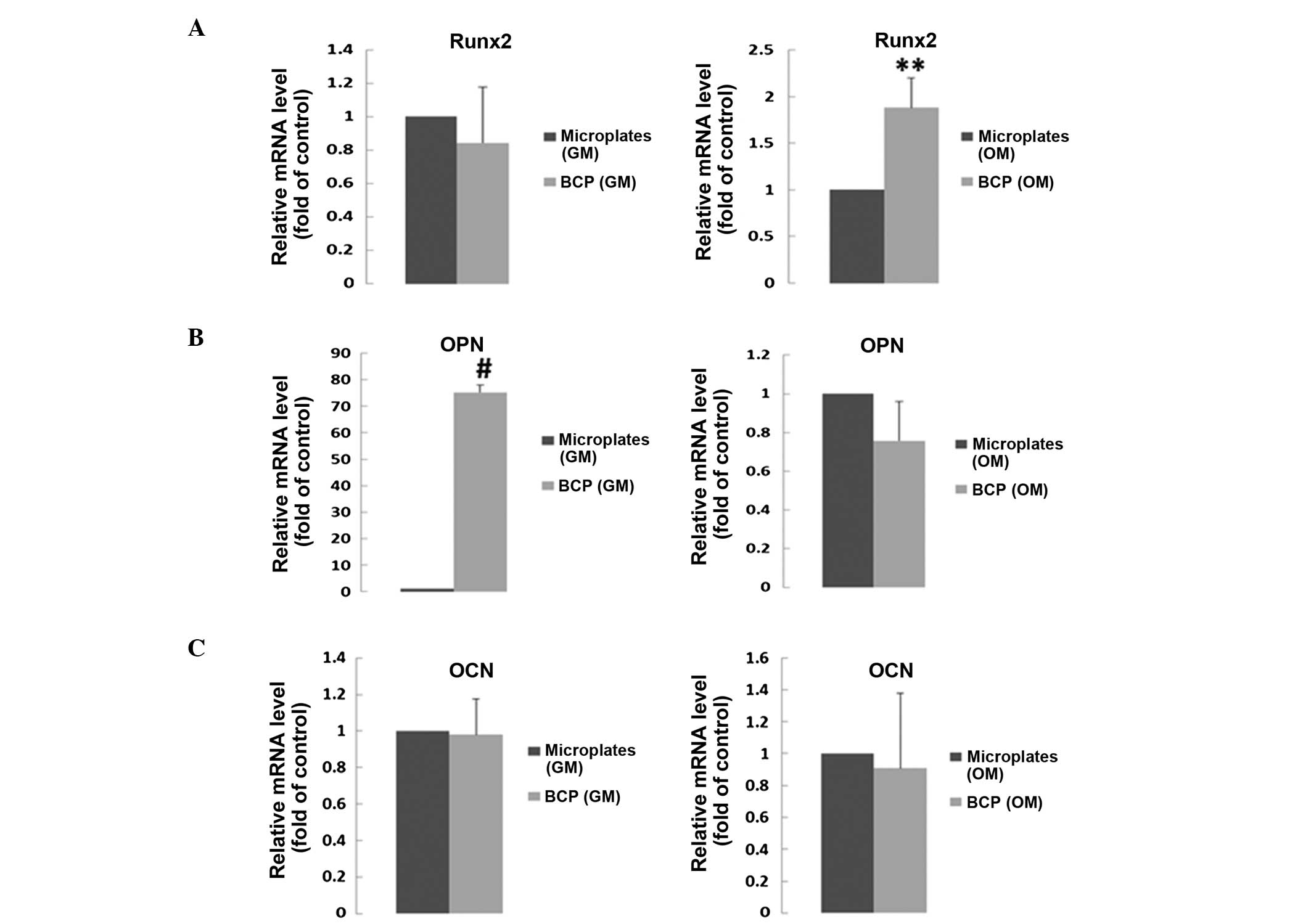|
1
|
Pihlstrom BL, Michalowicz BS and Johnson
NW: Periodontal diseases. Lancet. 366:1809–1820. 2005. View Article : Google Scholar : PubMed/NCBI
|
|
2
|
Monsarrat P, Vergnes JN, Nabet C, Sixou M,
Snead ML, Planat-Bénard V, Casteilla L and Kémoun P: Concise
review: Mesenchymal stromal cells used for periodontal
regeneration: A systematic review. Stem Cells Transl Med.
3:768–774. 2014. View Article : Google Scholar : PubMed/NCBI
|
|
3
|
Shue L, Yufeng Z and Mony U: Biomaterials
for periodontal regeneration: A review of ceramics and polymers.
Biomatter. 2:271–277. 2012. View Article : Google Scholar : PubMed/NCBI
|
|
4
|
Kim JH, Park CH, Perez RA, Lee HY, Jang
JH, Lee HH, Wall IB, Shi S and Kim HW: Advanced biomatrix designs
for regenerative therapy of periodontal tissues. J Dent Res.
93:1203–1211. 2014. View Article : Google Scholar : PubMed/NCBI
|
|
5
|
Ramseier CA, Rasperini G, Batia S and
Giannobile WV: Advanced reconstructive technologies for periodontal
tissue repair. Periodontol 2000. 59:185–202. 2012. View Article : Google Scholar : PubMed/NCBI
|
|
6
|
Lin NH, Gronthos S and Bartold PM: Stem
cells and future periodontal regeneration. Periodontol 2000.
51:239–251. 2009. View Article : Google Scholar : PubMed/NCBI
|
|
7
|
Bartold PM, McCulloch CA, Narayanan AS and
Pitaru S: Tissue engineering: A new paradigm for periodontal
regeneration based on molecular and cell biology. Periodontol 2000.
24:253–269. 2000. View Article : Google Scholar : PubMed/NCBI
|
|
8
|
Taba M Jr, Jin Q, Sugai JV and Giannobile
WV: Current concepts in periodontal bioengineering. Orthod
Craniofac Res. 8:292–302. 2005. View Article : Google Scholar : PubMed/NCBI
|
|
9
|
Barrère F, van Blitterswijk CA and de
Groot K: Bone regeneration: Molecular and cellular interactions
with calcium phosphate ceramics. Int J Nanomedicine. 1:317–332.
2006.PubMed/NCBI
|
|
10
|
El-Ghannam A: Bone reconstruction: From
bioceramics to tissue engineering. Expert Rev Med Devices.
2:87–101. 2005. View Article : Google Scholar : PubMed/NCBI
|
|
11
|
Szpalski C, Wetterau M, Barr J and Warren
SM: Bone tissue engineering: Current strategies and techniques -
part I: Scaffolds. Tissue Eng Part B Rev. 18:246–257. 2012.
View Article : Google Scholar : PubMed/NCBI
|
|
12
|
Kamitakahara M, Ohtsuki C and Miyazaki T:
Review paper: Behavior of ceramic biomaterials derived from
tricalcium phosphate in physiological condition. J Biomater Appl.
23:197–212. 2008. View Article : Google Scholar : PubMed/NCBI
|
|
13
|
LeGeros RZ: Properties of osteoconductive
biomaterials: Calcium phosphates. Clin Orthop Relat Res. 395:81–98.
2002. View Article : Google Scholar : PubMed/NCBI
|
|
14
|
Yuan H, van Blitterswijk CA, de Groot K
and de Bruijn JD: Cross-species comparison of ectopic bone
formation in biphasic calcium phosphate (BCP) and hydroxyapatite
(HA) scaffolds. Tissue Eng. 12:1607–1615. 2006. View Article : Google Scholar : PubMed/NCBI
|
|
15
|
Yao J, Li X, Bao C, Zhang C, Chen Z, Fan H
and Zhang X: Ectopic bone formation in adipose-derived stromal
cell-seeded osteoinductive calcium phosphate scaffolds. J Biomater
Appl. 24:607–624. 2010. View Article : Google Scholar : PubMed/NCBI
|
|
16
|
Jaiswal N, Haynesworth SE, Caplan AI and
Bruder SP: Osteogenic differentiation of purified, culture-expanded
human mesenchymal stem cells in vitro. J Cell Biochem. 64:295–312.
1997. View Article : Google Scholar : PubMed/NCBI
|
|
17
|
Kim H, Kim HW and Suh H: Sustained release
of ascorbate-2-phosphate and dexamethasone from porous PLGA
scaffolds for bone tissue engineering using mesenchymal stem cells.
Biomaterials. 24:4671–4679. 2003. View Article : Google Scholar : PubMed/NCBI
|
|
18
|
An S, Ling J, Gao Y and Xiao Y: Effects of
varied ionic calcium and phosphate on the proliferation, osteogenic
differentiation and mineralization of human periodontal ligament
cells in vitro. J Periodont Res. 47:374–382. 2012. View Article : Google Scholar : PubMed/NCBI
|
|
19
|
Holtorf HL, Jansen JA and Mikos AG: Flow
perfusion culture induces the osteoblastic differentiation of
marrow stroma cell-scaffold constructs in the absence of
dexamethasone. J Biomed Mater Res A. 72:326–334. 2005. View Article : Google Scholar : PubMed/NCBI
|
|
20
|
Lu H, Kawazoe N, Tateishi T, Chen G, Jin X
and Chang J: In vitro proliferation and osteogenic differentiation
of human bone marrow-derived mesenchymal stem cells cultured with
hardystonite (Ca2ZnSi2O7) and
{beta}-TCP ceramics. J Biomater Appl. 25:39–56. 2010. View Article : Google Scholar : PubMed/NCBI
|
|
21
|
Orimo H and Shimada T: The role of
tissue-nonspecific alkaline phosphatase in the phosphate-induced
activation of alkaline phosphatase and mineralization in SaOS-2
human osteoblast-like cells. Mol Cell Biochem. 315:51–60. 2008.
View Article : Google Scholar : PubMed/NCBI
|
|
22
|
Bernhardt A, Lode A, Peters F and Gelinsky
M: Optimization of culture conditions for osteogenically-induced
mesenchymal stem cells in β-tricalcium phosphate ceramics with
large interconnected channels. J Tissue Eng Regen Med. 5:444–453.
2011. View
Article : Google Scholar : PubMed/NCBI
|
|
23
|
Xu LL, Liu HC, Wang DS, E LL, Xu L, Jin ZL
and Duan YZ: Effects of BMP-2 and dexamethasone on osteogenic
differentiation of rat dental follicle progenitor cells seeded on
three-dimensional beta-TCP. Biomed Mater. 4:0650102009. View Article : Google Scholar : PubMed/NCBI
|
|
24
|
Coburn SP, Mahuren JD, Jain M, Zubovic Y
and Wortsman J: Alkaline phosphatase (EC 3.1.3.1) in serum is
inhibited by physiological concentrations of inorganic phosphate. J
Clin Endocrinol Metab. 83:3951–3957. 1998. View Article : Google Scholar : PubMed/NCBI
|
|
25
|
An S, Gao Y, Ling J, Wei X and Xiao Y:
Calcium ions promote osteogenic differentiation and mineralization
of human dental pulp cells: Implications for pulp capping
materials. J Mater Sci Mater Med. 23:789–795. 2012. View Article : Google Scholar : PubMed/NCBI
|
|
26
|
Song YG and Cho IH: Characteristics and
osteogenic effect of zirconia porous scaffold coated with β-TCP/HA.
J Adv Prosthodont. 6:285–294. 2014. View Article : Google Scholar : PubMed/NCBI
|
|
27
|
Komori T: Regulation of osteoblast
differentiation by Runx2. Adv Exp Med Biol. 658:43–49. 2010.
View Article : Google Scholar : PubMed/NCBI
|
|
28
|
Zhang Y, Xie RL, Croce CM, Stein JL, Lian
JB, van Wijnen AJ and Stein GS: A program of microRNAs controls
osteogenic lineage progression by targeting transcription factor
Runx2. Proc Natl Acad Sci USA. 108:9863–9868. 2011. View Article : Google Scholar : PubMed/NCBI
|
|
29
|
Qin C, Baba O and Butler WT:
Post-translational modifications of sibling proteins and their
roles in osteogenesis and dentinogenesis. Crit Rev Oral Biol Med.
15:126–136. 2004. View Article : Google Scholar : PubMed/NCBI
|
|
30
|
Terashima Y, Shimabukuro Y, Terashima H,
Ozasa M, Terakura M, Ikezawa K, Hashikawa T, Takedachi M, Oohara H,
Yamada S and Murakami S: Fibroblast growth factor-2 regulates
expression of osteopontin in periodontal ligament cells. J Cell
Physiol. 216:640–650. 2008. View Article : Google Scholar : PubMed/NCBI
|



















